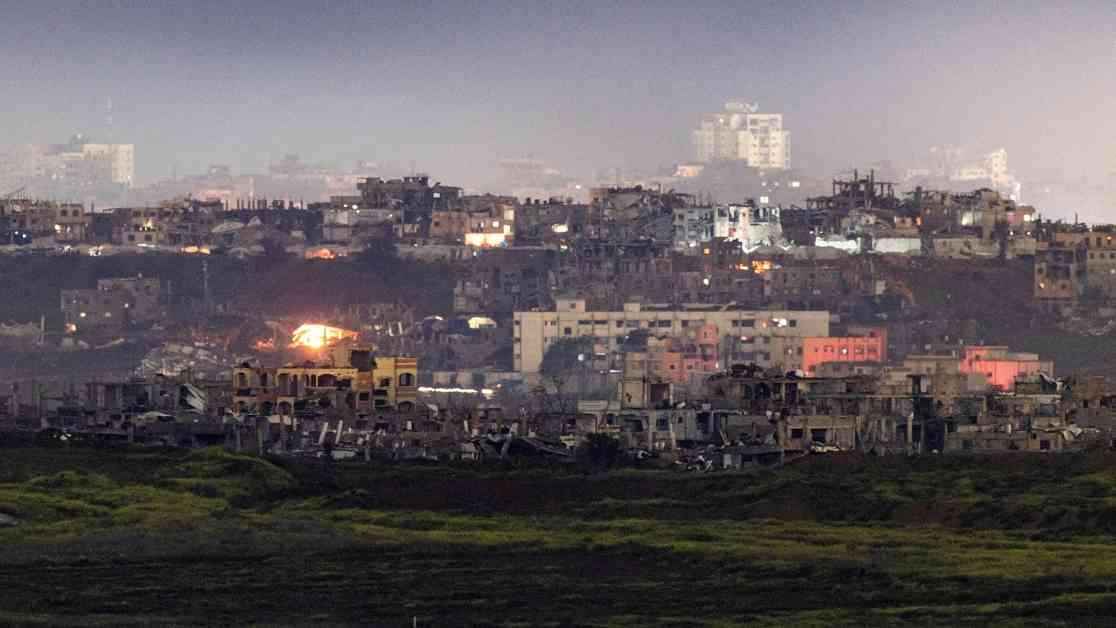Israel’s recent decision to end a ceasefire and launch extensive strikes in Gaza has sent shockwaves through the region, resulting in the tragic loss of over 400 lives. The strikes, carried out overnight on Tuesday, were in response to Hamas failing to release the remaining hostages, prompting Israeli Prime Minister Benjamin Netanyahu and Defense Minister Israel Katz to declare an escalation in military operations against Hamas terrorists.
The Gaza Ministry of Health reported that at least 404 Palestinians were killed in the strikes, with a heartbreaking toll of 174 children and 89 women among the casualties. The situation in Gaza quickly escalated as the strikes targeted various areas in Gaza, leading to widespread devastation and loss of life.
The Israeli Defense Forces (IDF) announced a second wave of airstrikes, targeting terrorist cells, launch sites, and other military infrastructure used by Hamas to carry out acts of terrorism. The IDF’s actions were aimed at ensuring the safety of IDF forces and Israeli citizens, but the impact on civilians in Gaza was catastrophic.
Humanitarian Crisis Unfolds
As the strikes continued, Doctors Without Borders reported receiving dozens of killed and injured individuals across Gaza, highlighting the urgent need for humanitarian aid and intervention. Claire Nicolet, the organization’s head of emergencies, expressed shock and outrage at the civilian casualties, emphasizing the devastating impact of the ongoing conflict on innocent lives.
The scenes of destruction and despair in Gaza painted a grim picture of the toll that the conflict was taking on the local population. With hundreds dead and many more injured, the need for immediate assistance and relief efforts became increasingly urgent as the situation continued to deteriorate.
International Outcry and Escalating Tensions
The resumption of hostilities between Israel and Gaza drew strong condemnation from international bodies, including the Saudi Ministry of Foreign Affairs and the Egyptian Foreign Ministry. The airstrikes were described as a violation of the ceasefire agreement and a dangerous escalation that threatened regional stability.
The Israeli government’s decision to launch the strikes was met with mixed reactions, with some supporting the military action as a necessary response to Hamas’ actions, while others expressed concern over the escalating violence and its impact on civilian populations. The situation remained fluid, with tensions running high on both sides of the conflict.
The ongoing hostage crisis and the refusal of Hamas to release the remaining captives added a layer of complexity to the situation, with international envoys and diplomats working to find a resolution to the crisis. The involvement of the U.S. special envoy to the Middle East, Steve Witkoff, underscored the importance of finding a peaceful resolution to the conflict.
In the midst of escalating tensions and mounting casualties, the world watched with bated breath as the situation in Gaza continued to unfold. The fate of the hostages, the impact on civilian populations, and the broader implications for regional stability remained at the forefront of global concerns.
As the conflict entered a critical phase, the need for immediate action to prevent further loss of life and humanitarian suffering became increasingly urgent. The international community’s response to the crisis would play a crucial role in shaping the outcome of the conflict and determining the path forward for all parties involved.
The situation in Gaza serves as a stark reminder of the human cost of conflict and the urgent need for peaceful resolution to prevent further tragedy and loss of life. The coming days would be crucial in determining the trajectory of the conflict and the prospects for a lasting peace in the region.


